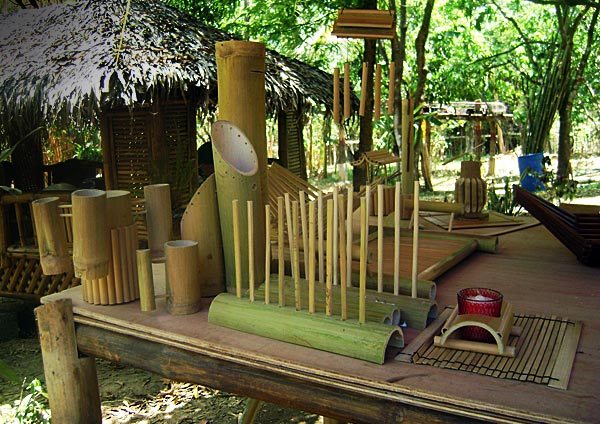Bamboo, often hailed as the "green gold," is a versatile and sustainable resource that has been integral to human civilisation for centuries. From its humble beginnings to its modern-day applications, bamboo's journey epitomises resilience, versatility, and environmental stewardship. Let's delve into the fascinating journey of bamboo and its role as a sustainable resource shaping our world.
-
Origins and Growth: Bamboo, belonging to the grass family, has a remarkable growth rate, with some species capable of growing up to 91 cm (36 inches) in a single day. Originating from diverse climates worldwide, bamboo thrives in various environments, from tropical rainforests to temperate regions. Its rapid growth and regenerative properties make it one of the most sustainable resources on the planet.
-
Traditional Uses: Throughout history, bamboo has served as a vital resource for countless civilizations. From building materials and tools to household items and musical instruments, bamboo's versatility knows no bounds. In many cultures, bamboo symbolizes strength, flexibility, and prosperity, embodying the sustainable ethos of living in harmony with nature.
-
Modern Applications: In today's world, bamboo continues to play a pivotal role in sustainable living practices. Its exceptional strength-to-weight ratio makes it an ideal alternative to traditional building materials like wood and steel. Bamboo flooring, furniture, and structural components are gaining popularity for their durability, aesthetics, and eco-friendly attributes.
-
Environmental Benefits: Bamboo's environmental benefits extend far beyond its utility as a renewable resource. As one of the fastest-growing plants on Earth, bamboo absorbs carbon dioxide and releases oxygen at a significantly higher rate than trees. Additionally, bamboo's extensive root system helps prevent soil erosion, improve water quality, and promote biodiversity in ecosystems where it grows.
-
Sustainable Harvesting Practices: Sustainable harvesting practices are essential to ensure the long-term viability of bamboo as a resource. Unlike traditional timber harvesting, which often leads to deforestation and habitat destruction, bamboo can be harvested without causing harm to the plant or its surrounding environment. Selective harvesting methods allow bamboo forests to regenerate naturally, maintaining ecosystem integrity and biodiversity.
-
Innovation and Future Prospects: In recent years, bamboo has emerged as a sustainable solution in various industries, including construction, textiles, and packaging. Innovations such as bamboo-based fabrics, biodegradable packaging, and renewable energy sources showcase the immense potential of bamboo in addressing pressing environmental challenges.
As we continue to explore and harness the potential of bamboo as a sustainable resource, it is crucial to prioritize responsible stewardship and conservation efforts. By embracing bamboo's journey and incorporating it into our lives in thoughtful ways, we can contribute to a more sustainable and resilient future for generations to come.

